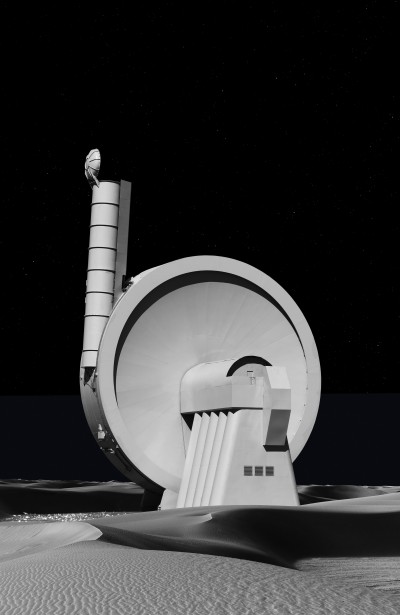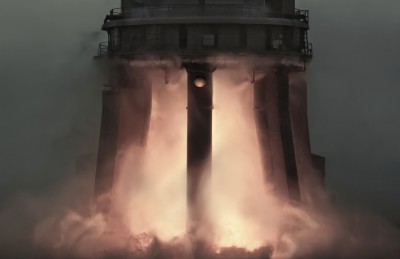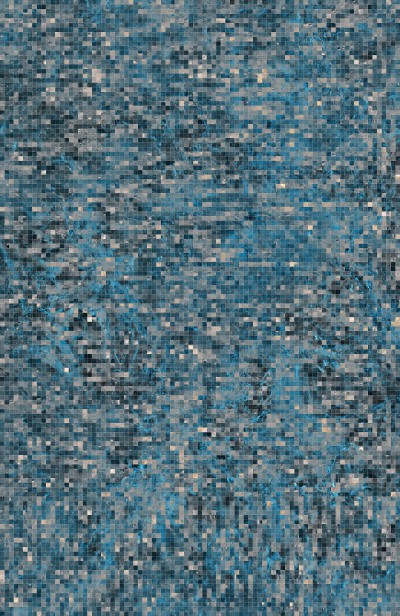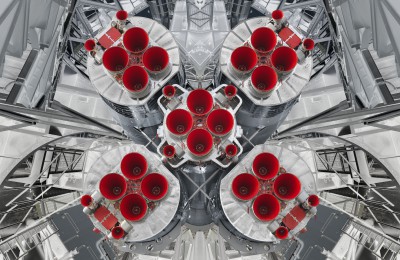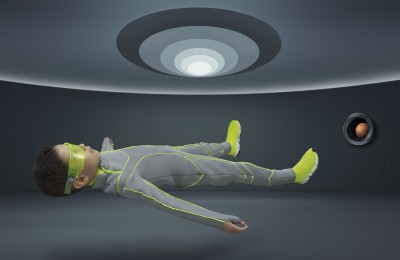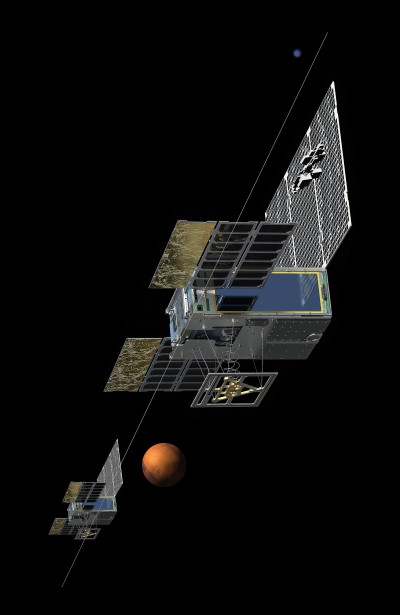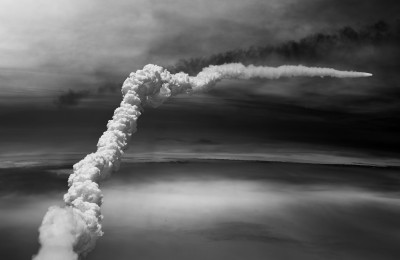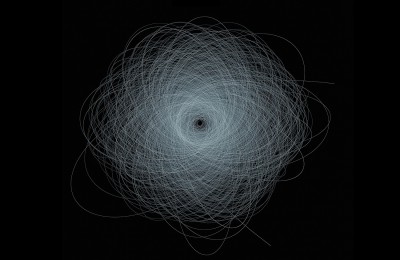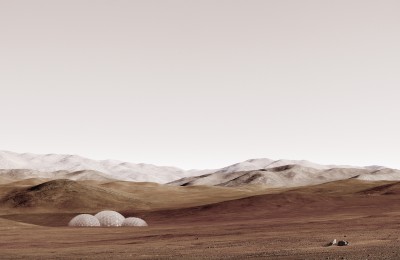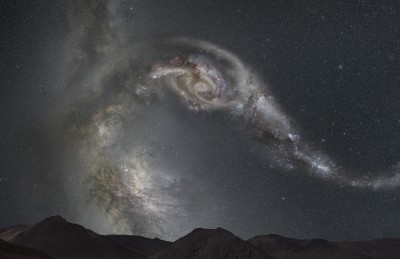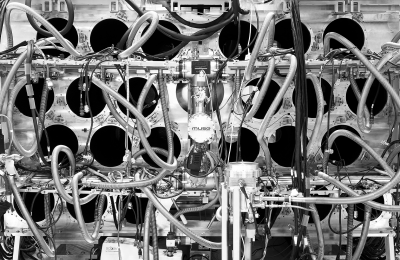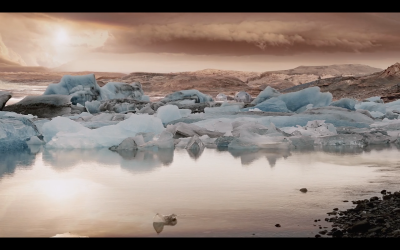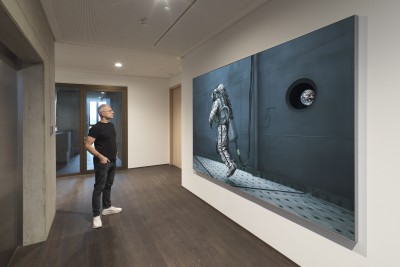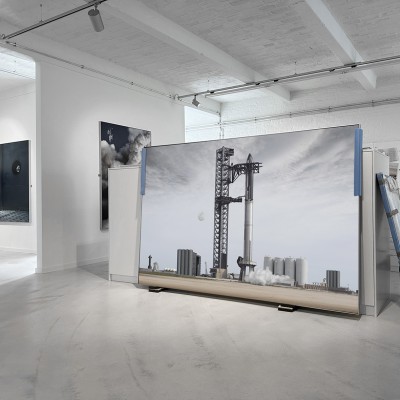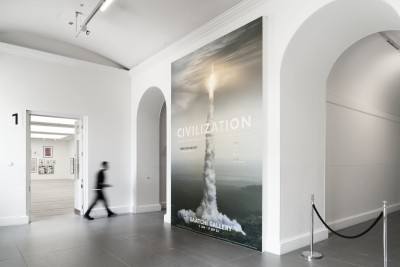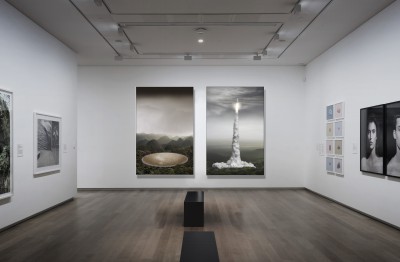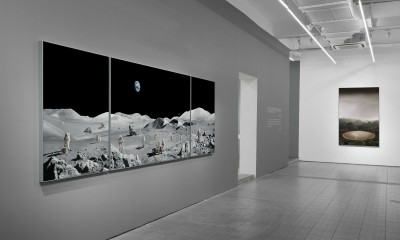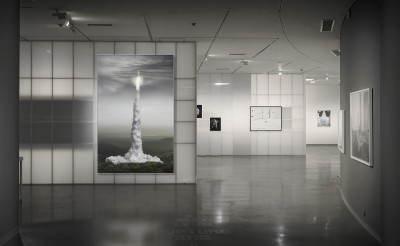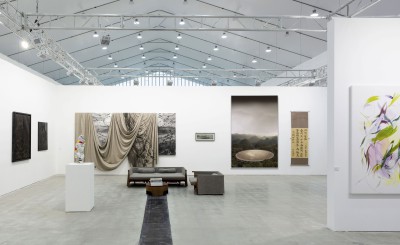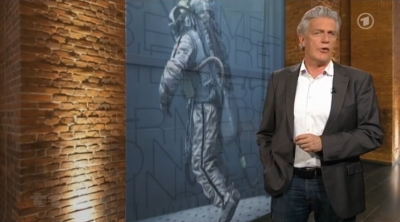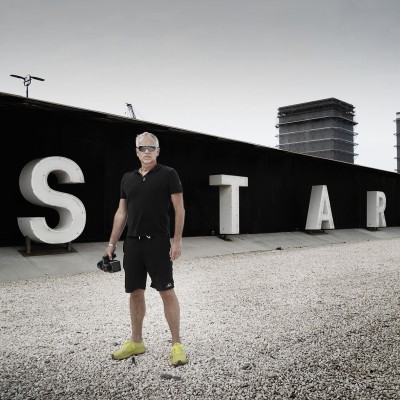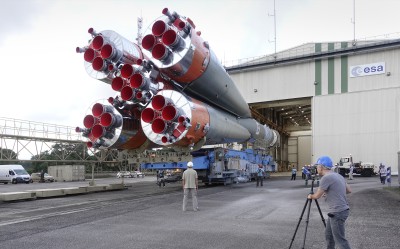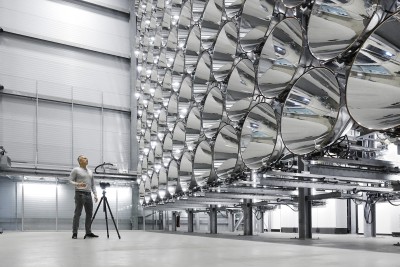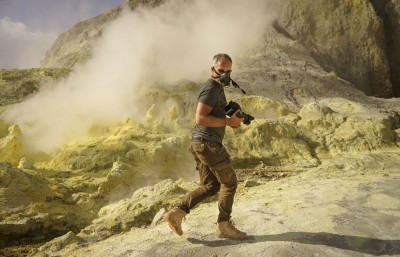
orbital outpost
Format 1: 132 x 202 cm / 52 x 79.5 in, edition of 6 + 2 AP
Format 2: 67 x 102 cm / 26.3 x 40.2 in, edition of 6 + 2 AP
Hybrid photography, archival pigment print, aludibond, diasec, custom-made aluminium frame
Over the last century the technical futuristic vision of a manned space station became the apogee of all speculative thought on space and the privileged locus for all extra-terrestrial aspiration. The orbital station was the central element in the futuristic logic of expansion as the infrastructural prerequisite for human penetration of the endless depths of space. It should enable the vertical expansion of the terrestrial human habitat. Its theoretical line of development ranges from Hermann Oberth’s “The Rocket into Planetary Space” (1923) and Wernher von Braun’s model of a gigantic space wheel to Stanley Kubrick’s double wheeled space station in “2001: A Space Odyssey” (1968). The concept of a space station developed into an icon of a global astroculture. Since the early 1970s space stations for maintaining a permanent human presence in space have become a reality. 1998 marked the launch of the first component of the International Space Station (ISS) and the last pressurized module was fitted in in 2011. In low Earth orbit at an altitude of approx. 400 km, it circles the Earth once every 92 minutes and has now reached dimensions of 110 m length x 100 m width x 30 m height with a mass of 450 tonnes. On the one hand the ISS underscores the scientific character of an orbital station as an observation post for monitoring the Earth’s climate and as a zero-gravity research lab. Yet it was also always seen as a springboard for discovery in our solar system: one of the key parts of its research work is investigation of the effects of space conditions on the human body during long-term sojourns in microgravity. Such studies are essential for the expansion of a human presence in outer space.
The work “orbital outpost” deals with the realization of the space station utopia, and the relationship between technology, the human body and weightlessness. In space there is no oxygen, sound, no atmospheric pressure, only darkness and an all-encompassing void. In zero gravity even the simplest repairs to the space station become complicated ventures. A highly-complex technological support system enveloping the human body in multiple layers is critical for survival. "orbital outpost” fuses outside shots of a spacewalk from the International Space Station with images of earlier space stations including the American Skylab, the Russian Mir, Wernher von Braun’s vision, and the iconic space station from Stanley Kubrick’s famous film. The centre of the composition is the human body clad in its protective technological shell and in imminent danger of floating away, one hand just manages to grasp the handhold. Even though a permanently crewed outpost is now in orbit around the Earth, space still remains an inimical and deeply alien environment – which makes it an ideal realm for our imagination and a green screen for our musings on utopian worlds.

